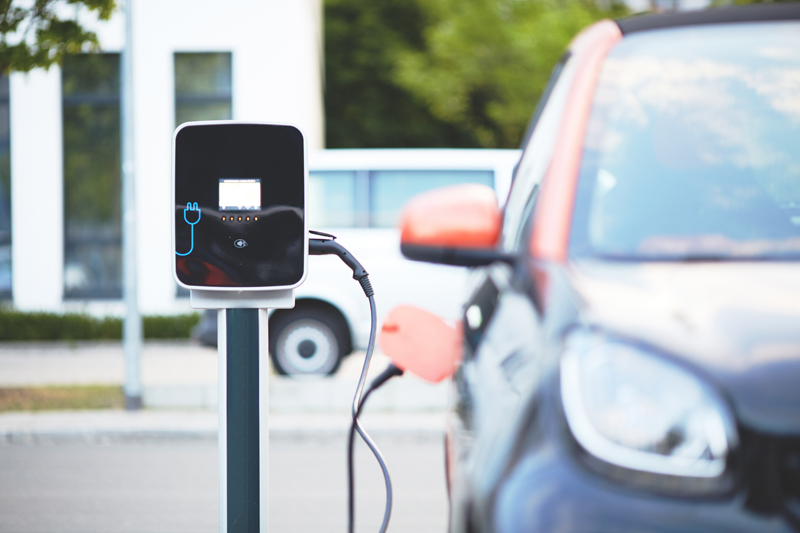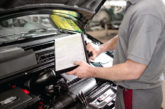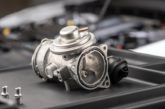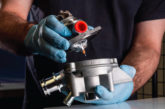
Whilst electric and hybrid vehicles are set to be the future of the automotive industry, there is much work to be done before they become the new normal. Neil Pattemore explains…
It may seem hard to believe, but the first vehicles were battery powered before the automobile powertrain became based on an internal combustion engine, gearbox and transmission system. We have all become increasingly used to working on electro-mechanical systems, but now the emphasis is changing back to be more focused on the electrical aspect – not so much about being ‘back to the future’, as being ‘forward to the past’!
A briefing paper from the European Parliament published in 2018 illustrated why these changes in powertrain are necessary: “Transport is the only sector in the EU that did not record any significant decline in greenhouse gas (GHG) emissions from 1990. GHG emissions in the EU transport sector have increased since 2014. In 2016, they were 25% above 1990 levels (including international aviation, but excluding maritime shipping). Of all means of transport in the EU, road transport generates the largest share of greenhouse gas emissions (72.9% in 2016), and is responsible for around 20% of the EU’s total GHG emissions.”
As we are all aware, the world is changing to include different forms of powertrain in today’s and, more importantly, tomorrow’s vehicles. In fact, vehicle manufacturers are currently in a race to introduce ever-increasing levels of electrification to the point that by 2025, the majority of new vehicles will have technologies that will power the vehicle without having to use the internal combustion engine.
The rise of the hybrid
Hybrid vehicles will introduce a range of new issues for both legislator and workshop – these will have an increasing impact on the type of work that will be required for these new vehicle powertrains. Ultimately, the vehicle powertrain will be fully electric, which in turn may become a fully autonomous vehicle – a combination of both electrical and electronic systems. However, before we reach this point, hybrid systems will become the most viable and popular powertrain. These hybrid vehicles are defined as “a vehicle where one of the propulsion energy converters is an electric machine.” However, vehicle type approval legislation defines several categories of hybrid vehicles with these snappy little acronyms:
- OVC-HEV – an off-vehicle charging hybrid electric vehicle, able to be charged from an external source
- NOVC-HEV – a vehicle with at least two different energy converters and two different energy storage systems (onvehicle) for the purpose of vehicle propulsion
- OVC-FCHV – an off-vehicle charging fuel cell hybrid vehicle able to be charged from an external source
- NOVC-FCHV – a non-off-vehicle charging fuel cell hybrid vehicle with at least two different energy converters and two different energy storage systems (on-vehicle) for the purpose of vehicle propulsion
In the short-to-medium term, hybrid vehicles will increasingly include ‘mild hybrids’. These are also known as power-assist hybrids, battery-assisted hybrid vehicles, or BAHVs, and generally have an internal combustion engine equipped with a motor/generator in a ‘parallel’ configuration, which allows the engine to be turned off whenever the car is coasting or braking and restart quickly. Mild hybrids may employ regenerative braking and some level of power assist to the internal combustion engine, but mild hybrids do not have an electric-only mode of propulsion.
From a legislative aspect, all of these hybrids still use the vehicle’s internal combustion engine, so in all cases, there are exhaust emissions that remain subject to type approval legislation. In theory, however, the overall emissions should be lower.
Although there are no differences in the exhaust emission limits applied to hybrid vehicles, the problem for the workshop is how to control the engine of a hybrid vehicle to allow it to be diagnosed or the emissions tested.
These ‘in-service’ emissions from hybrid vehicles (particularly OVC-HEVs) are becoming a contentious subject; the design of the vehicles should produce lower overall emissions, but it seems that when independent tests have been conducted, this has not been shown to be the case. It has been widely reported that many hybrid vehicles are driven on their internal combustion engine only, as drivers do not always have the facility to recharge them. Equally, hybrid vehicles are not subject to an emissions test during MOT servicing.
In a report from TMC, test results showed that “plug-in hybrids in the sample achieved an average of 45 miles per gallon compared with their average advertised consumption of 130 mpg. This average fuel use is equivalent to actual CO2 emissions of 168 grams per kilometre (g/km). That compares with the cars’ advertised emissions (which determine the drivers’ benefit-in-kind tax rates), which averaged 55g/km.”
Moreover, PHEVs in TMC’s sample, tended to emit more CO2 in real-world driving than ordinary diesel company cars. Earlier this year, TMC analysed real-world fuel consumption and CO2 data of 20,000 conventional fleet diesels. The diesels’ emissions averaged 159g/km compared with the PHEVs’ average of 168g/km.
Testing, testing…
Is this the new ‘diesel gate’? What should the legislator do? The answer is in the new ‘Worldwide Harmonized Light-duty vehicles Test Procedure’ (WLTP), which has applied to the type approval of new passenger cars across the EU since 1st September 2017.
Hybrid vehicles must complete the test several times; they start up with a full battery, and the test cycle is repeated until the battery is empty. The combustion engine operates for a longer time each cycle, and emissions are measured with each cycle. This is followed by a measurement with an empty battery, in which the drive energy originates solely from the combustion engine and regenerative braking.
This multi-stage measurement can not only be used to determine fuel consumption and CO2 emissions more precisely, but the electrical range and total range as well. The CO2 value to be determined is then calculated as the ratio of the electrical range to the total range.
On a separate legislative issue, there is a more generic legislative requirement for technicians who are working on electrically-driven vehicles to ensure that they have the required level of competence to work on these increasingly high voltage systems, known as the rechargeable electric energy storage system (REESS).
It is the direct responsibility of the business owner to ensure that their employees are sufficiently trained and equipped to work on these vehicle types, even if this work does not directly relate to the high voltage battery. This imposes compliance for both the Electricity at Work Regulation (EWR) 1989, and the Safety at Work Act 1979.
On a more positive note, the European Commission has confirmed that electric vehicles still need to support access to their in-vehicle systems for repair and maintenance, clarifying the misconception that if there were no emissions, then the OBD connector would not need to be fitted.









